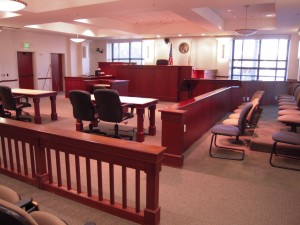
If you are arrested for a felony in California and are taken into custody, you have a right to be brought before a judge within 48 hours, excluding weekends and holidays. This initial appearance is the arraignment. If you make bail or otherwise are not in custody, your arraignment will generally be set within a reasonable time, usually within a few weeks.
At the arraignment, you will be informed of the charges and any sentencing enhancements filed against you. If you are in custody, bail will also be set at that time. You will have the option to enter a plea of guilty or not guilty, or you may request a continuance of your arraignment to seek counsel or as part of a potential plea which may only be offered by the prosecution prior to arraignment.
Following a not guilty plea at the arraignment, the vast majority of cases in California proceed by way of a preliminary hearing, which you are entitled to have held within 10 court days. Preliminary hearings are a kind of “mini trial” put on before a judge with no jury. Unlike a jury trial in which your guilt must be proved beyond a reasonable doubt, in a prelim the prosecution must put on enough evidence only to show that there is “probable cause” to convince the judge that you committed the crimes of which you are accused – a much lower standard. The purpose of a prelim is to weed out charges that are completely unsupported by the evidence without the expense of a full-blown trial. Generally, only a few witnesses will testify for the prosecution at a prelim, and what the defense can present is severely limited. Therefore, prelims rarely last more than a few hours or so.
The prelim is the first chance for the judge to see the evidence in the case. After getting this “preview” of the evidence, the judge will decide if there is in fact the necessary probable cause to believe you have committed the crimes charged. The judge may dismiss or reduce charges at this point.
Following the prelim, the prosecution will be able to review the evidence as well. If a particular witness did poorly on the stand, or if other evidence is shown to be weak, it is possible the prosecution may reduce or dismiss charges. However, they may also decide the evidence presented at prelim justifies additional or even higher charges. A defense attorney may challenge any of the charges based on the evidence presented at prelim thought a 995 motion. A 995 motion is a challenge to the sufficiency of the evidence and is brought before a different judge than the one who conducted the prelim.
If you are held to answer on any of the charges (meaning the judge found probable cause you committed the crime), you will be arraigned a second time within 15 calendar days. Again, you would be presented with the charges against you and given an opportunity to enter a plea. You have a right to a trial to begin within 60 calendar days of this arraignment.
Once your case is assigned to a trial court, your attorney can file additional motions, such as to suppress evidence or demand discovery. This is also an opportunity for your attorney to negotiate with the prosecution and attempt to settle the case.
If you have been accused of committing a felony, it is important that you understand your rights and are protected every step of the way. Contact criminal defense attorney Scott R. Ball today for a free and confidential consultation.



 © Copyright 2010-2024 |
© Copyright 2010-2024 |
{ 0 comments… add one now }